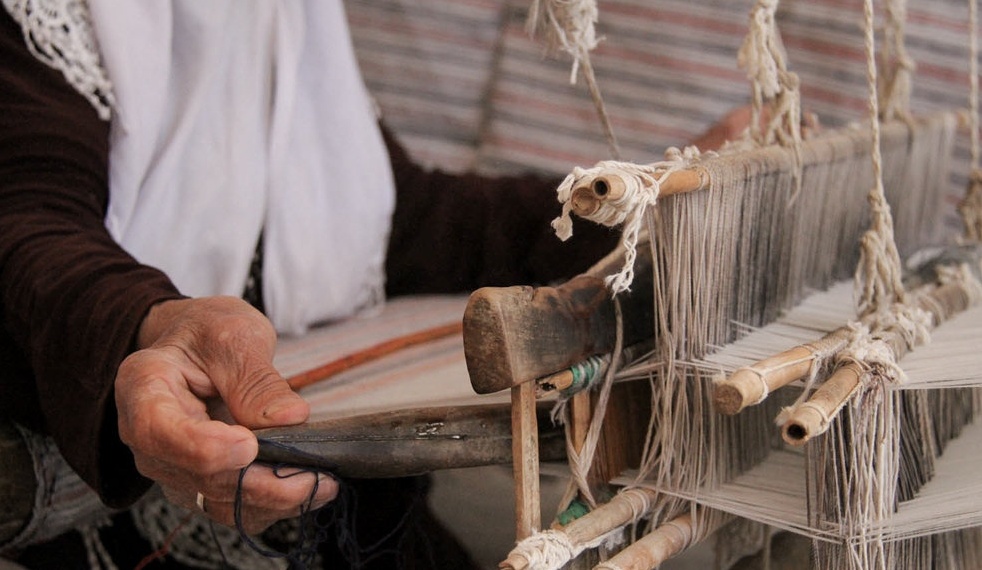Sofreh Weaving or 'Sofreh-e Ardi' is a fading art that is practiced in nomadic regions. Stay with Saed News to learn more about this traditional craft.

Another functional and decorative Iranian handicraft is known as Sofreh Bafi or Sofreh-e Ardi. This product belongs to the category of loom-woven crafts and is one of the nomadic handicrafts of Chaharmahal and Bakhtiari Province. This type of weaving has traditionally been for personal use only. Unfortunately, due to the availability of similar industrial products, its use has significantly declined. This handwoven item closely resembles the Kurdish sofreh of North Khorasan Province in terms of function, production method, and raw materials.
Wool and cotton yarn are the main raw materials used in this craft. The typical size of the sofreh is approximately 110 x 110 cm. Designs such as mountains, goats, rams, and plants—depicted in geometric forms—are woven into the center and borders of the sofreh, often in a slightly embossed style. These motifs are created from memory and are inspired by the natural environment of the weavers. Like other handmade textiles, this fabric should be protected from fire, sharp objects, and constant moisture. It can be washed with lukewarm water and non-acidic detergents. The materials used are organic, and only a few people are still familiar with them.

Women spread this sofreh under the taghar (a special container used for kneading and resting dough) while preparing dough to prevent flour and dough from scattering on the ground. Another traditional use is for storing natural sourdough starter until the next baking session, which may occur several weeks later. In recent years, other uses have emerged for this beautiful textile, including as table covers for korsi heaters, doormats, and prayer rugs.
Currently, only three elderly female artisans continue to produce these sofrehs. Due to the high cost of yarn and lack of its production, there is little interest in weaving with cotton thread. In the past, the cultivation of cotton meant that cotton yarn formed a major part of clothing and textile materials. Today, this is no longer common, which has caused sofreh weaving to fall out of favor. However, some individuals still keep the tradition alive. To preserve this art from extinction, it is essential to teach it in cultural institutions so that those interested can engage in this craft.
Besides Chaharmahal and Bakhtiari, sofreh weaving is also practiced in Isfahan Province.

